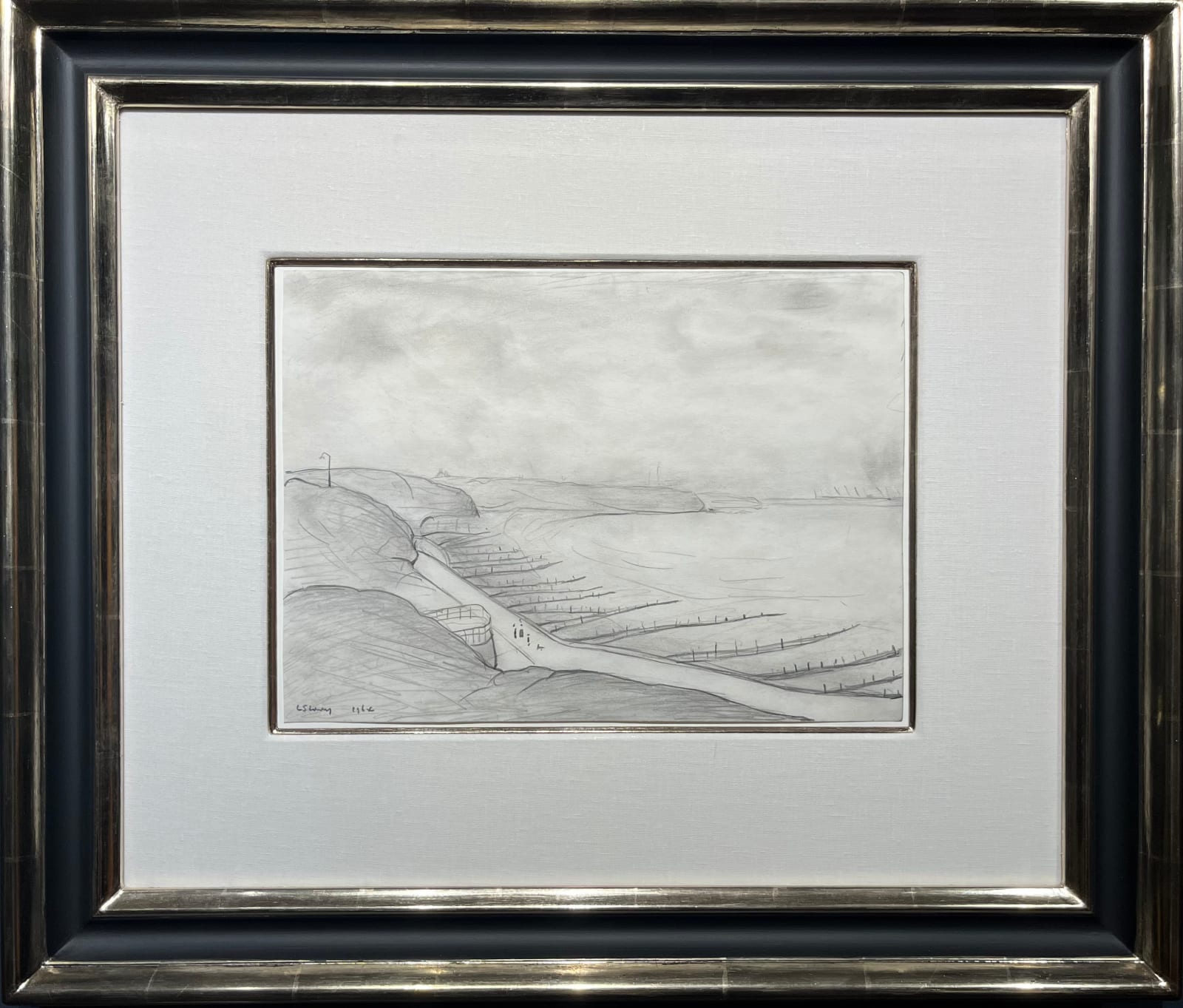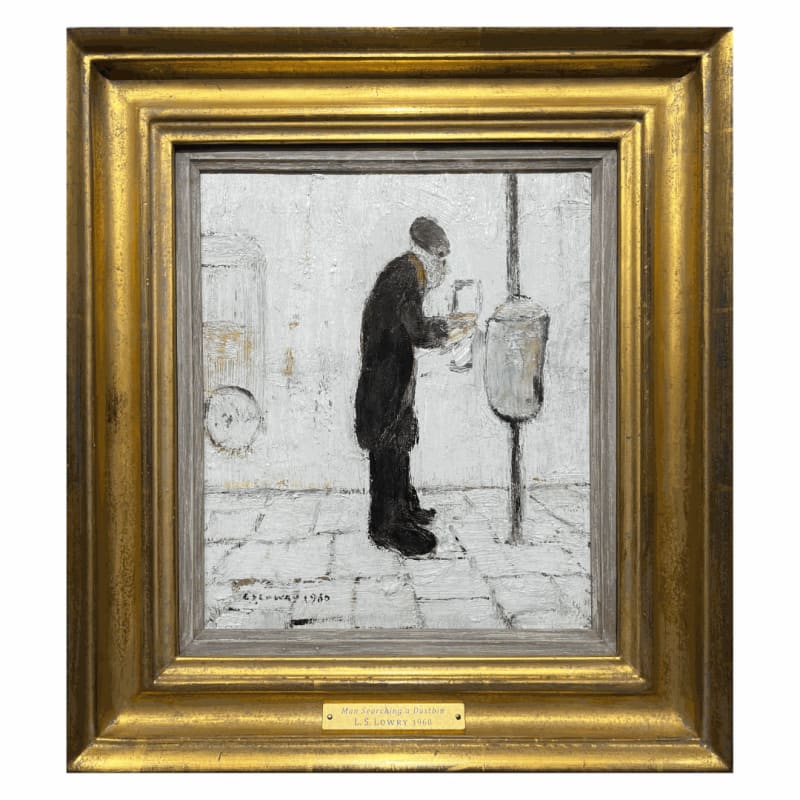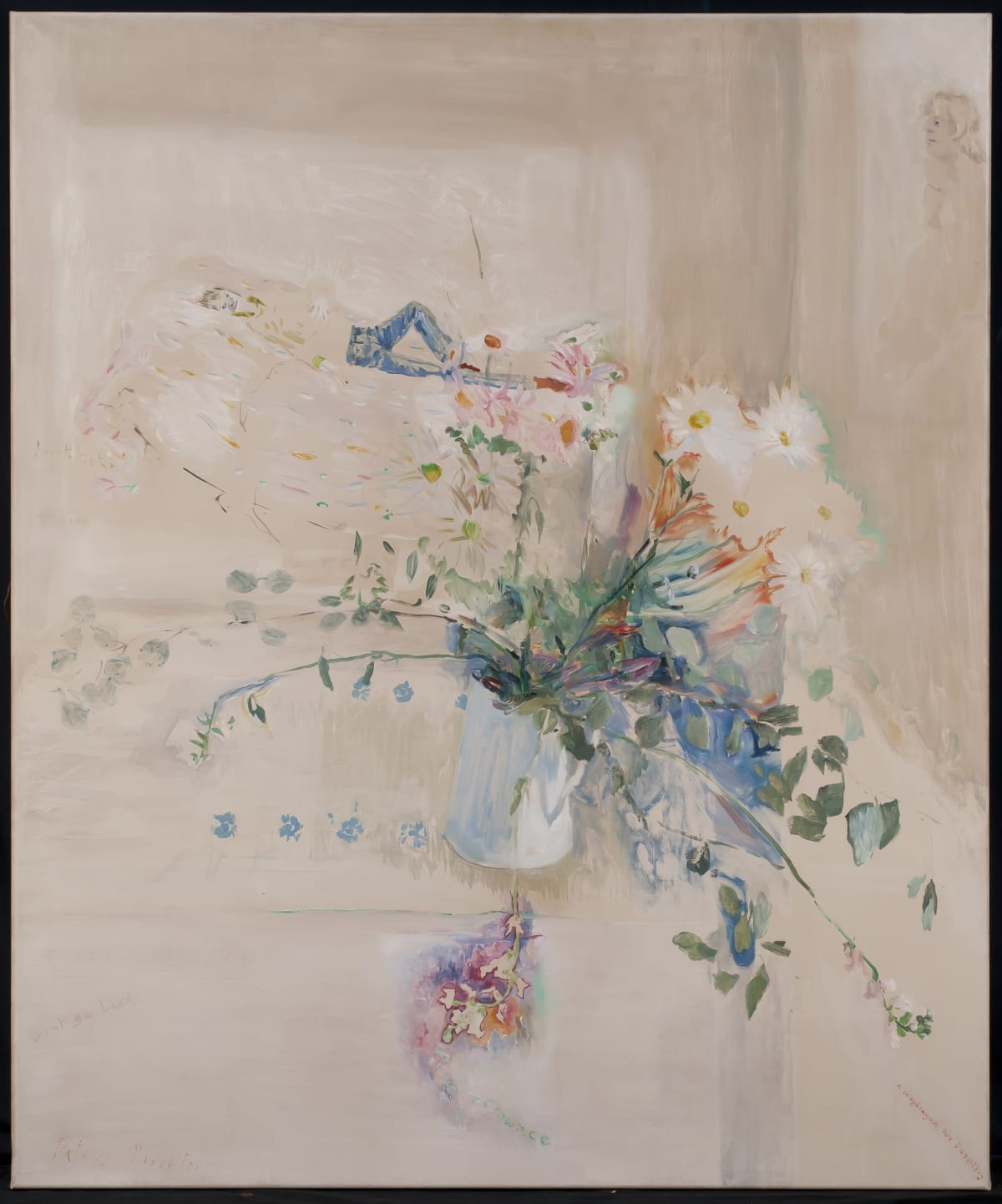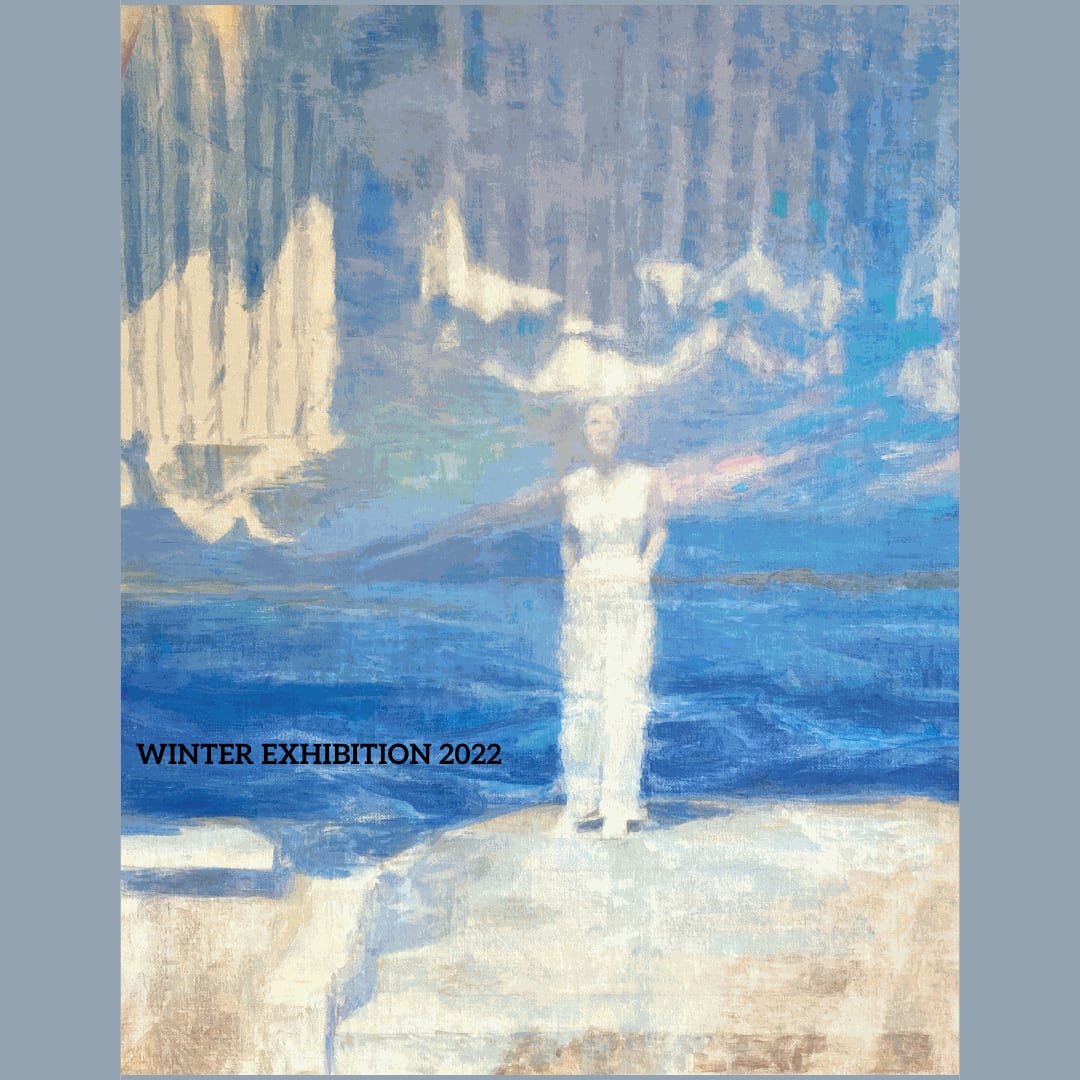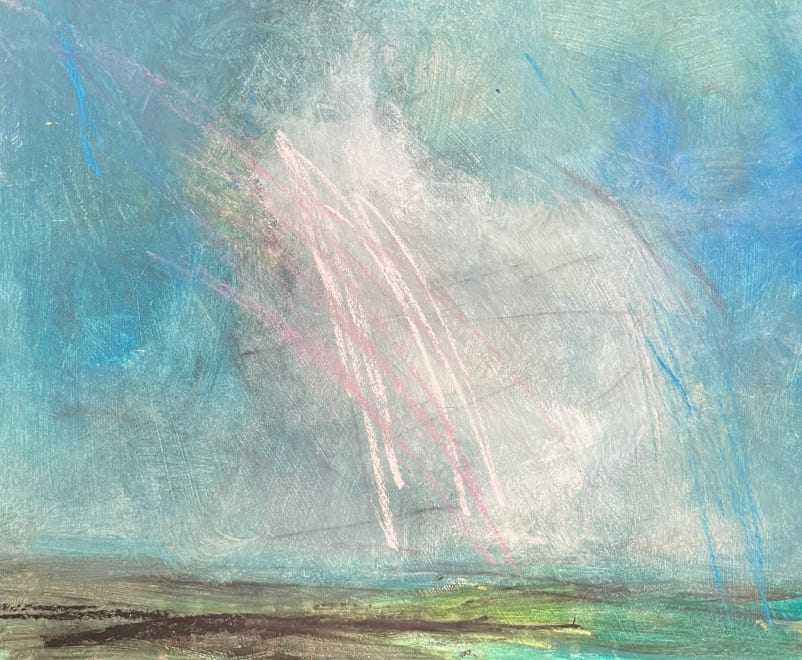Seaham Harbour 1964 by L.S. Lowry
-
Explore our curated collection of original L.S. Lowry artworks available for purchase. Known for his iconic portrayal of industrial life in the North of England, Lowry’s distinctive style captures the energy and resilience of the working-class communities he painted. Featuring his signature matchstick men, bustling streets, and atmospheric urban landscapes, each piece reflects Lowry's deep connection to the industrial environment and the people who inhabited it. Our selection includes both iconic works and rare pieces, with careful provenance and authenticity assured. Whether you're looking for a timeless landscape or a bustling city scene, each artwork showcases Lowry’s masterful use of colour and composition.
At Contemporary Six, we offer expert guidance to help you find the perfect piece to add to your collection. Browse through our range and discover the unique beauty of L.S. Lowry's art today. -
Works
L.S Lowry 1887-1976
Seaham Harbour, 1964Pencil on paper
Signed and dated 'LS Lowry 1964' (lower left)
Artwork location: Hale Gallery25.4 x 34.9cm
Copyright The ArtistProvenance
with Stone Gallery, Newcastle upon Tyne.
Anonymous sale; Sotheby's, London, 2 October 1991, lot 127.
Anonymous sale; Christie's, London, 23 November 2017, lot 294, where purchased by the present owner.Exhibitions
Newcastle upon Tyne, Stone Gallery, L.S. Lowry, 1964
Newcastle-upon-Tyne, Stone Gallery, Recent Drawings and Paintings by LS Lowry, 11 March-8 April 1967
BiographyContemporary Six are proud to have sold a number of high quality paintings and drawings by sought after Mancunian artist, L.S. Lowry.
Due to this, we are now offering art consultancy, specialising with sourcing works. We will take the time to work with you in finding the perfect piece with no pressure or obligation. We build lasting relationships with our clients ensuring they have a relaxed experience and return to us for advice. Our wide network of trusted partners mean that we can offer sought after, quality work at competitive prices.
If you are looking for a piece by Lowry, please do contact us directly to discuss further.
L.S. Lowry, born on November 1, 1887, in Stretford, Lancashire, England, is renowned for his distinctive urban landscapes depicting northern England's industrial scenes. His art features "matchstick men" against backdrops of factories and terraced houses, capturing the essence of the industrial era with simplicity and depth.
Lowry began his artistic journey at the Manchester School of Art under Adolphe Valette but developed a unique style diverging from traditional methods. Using a limited palette of black, white, and grey, he created moody atmospheres, often layering paint for textured effects that mirrored industrial grime.
"Coming from the Mill" (1930) exemplifies his meticulous approach, depicting factory workers leaving amidst a bustling yet monotonous industrial life. "The Football Match" (1949) portrays the vibrant communal life of working-class England.Lowry's process was meticulous; he sketched on-site and painted from memory, giving his works emotional depth. "The Pond" (1950) blends realism with personal vision, depicting a surreal industrial landscape. ‘This is a composite picture built up from a blank canvas. I hadn't the slightest idea of what I was going to put in the canvas when I started the picture but it eventually came out as you see it. This is the way I like working best’ (letter from the artist, 21 January 1956).
Though a rent collector by day, Lowry persisted in art, gaining recognition in the late 1950s and becoming a Royal Academician in 1962. His legacy lives on through The Lowry museum in Salford Quays, which houses his extensive collection.
Lowry was awarded an honorary Master of Arts degree by the University of Manchester in 1945, and Doctor of Letters in 1961. In April 1955 Lowry was elected as an Associate Member of the Royal Academy of Arts and in April 1962 became a full Royal Academician. At the end of December of the same year his membership status evolved to that of Senior Academician having reached the age of 75. He was given the freedom of the city of Salford in 1965.
The Hallé orchestra performed a concert in his honour and Prime Minister Harold Wilson used Lowry's painting 'The Pond' as his official Christmas card. Lowry twice declined appointment to the Order of the British Empire: as an Officer (OBE) in 1955, and as a Commander (CBE) in 1961. He turned down a knighthood in 1968.
Lowry passed away on February 23, 1976, leaving behind a legacy that resonates with the human condition of 20th-century Britain, securing his place as a significant British artist. In 2013 a retrospective was held at the Tate Britain in London, his first there.
Youtube - The Painting of Modern Life
Exhibitions-

Modern British
25 Mar - 12 Apr 2023The Exhibition 'Modern British' refers to artists and movements from post-war Britain. Of course there are numerous artists whose work could have been included. There are many connections between artists, defined movements and clear lines of lineage that could create a magnitude of exhibitions all titled Modern British. However, our...Read more -

Winter Exhibition 2022
10 Dec 2022 - 22 Feb 2023Our Winter Exhibition 2022 brings a fresh selection of artwork from Gallery artists and a few new faces including Linda Schwab, Louisa-Longstaff Scales, Robert Mead, Craig Jefferson and Laura Pedley.Read more
This will be our final exhibition of 2022, a chance to view some fantastic art in a welcoming space and help the Contemporary Six Team toast an exciting year. We would love you to join us. -

Northern Connections
29 Oct - 20 Nov 2022MICHAEL ASHCROFT - ANNE ASPINALL - ARTHUR BERRY HELEN CLAPCOTT - FLORIAN FOERSTER - JEAN HOBSON GEOFFREY KEY - NORMAN LONG - L.S LOWRY - IAN MOOD JEN ORPIN - ROB POINTON - ADAM RALSTON - STEVEN SMITH LIAM SPENCER - PETER STANAWAY -JO STANNESS - COLIN TAYLOR ALAN JAMES...Read more
FAQs
Laurence Stephen Lowry (1887–1976) was an English artist best known for his depictions of industrial life in the North of England, particularly Manchester and Salford. Born in Stretford, Greater Manchester, he worked as a rent collector while pursuing art in his spare time. His distinctive style and focus on everyday working-class life set him apart, making him one of Britain’s most recognised painters.
Lowry is associated with a form of industrial realism, though his work also has elements of naïve or primitive art. His paintings feature simple, almost childlike figures—often called 'matchstick men'—placed in detailed urban landscapes filled with mills, factories, and terraced houses. His use of perspective and composition gives his paintings a unique, somewhat flattened appearance, often creating a dreamlike or nostalgic feel.
Lowry was deeply influenced by his surroundings. Growing up in Manchester and later moving to Salford, he was surrounded by the urban landscapes of the Industrial Revolution. Rather than romanticising these settings, he painted them as he saw them—smoky skies, crowded streets, and the daily routines of working-class people. He wanted to capture the character of these communities, finding beauty and emotion in what many saw as bleak environments.
Lowry worked primarily with oil paints on canvas or board. He had a limited palette, using only five basic colours: Flake white, Ivory black, Vermilion (red), Prussian blue, and Yellow ochre. This restricted palette contributed to the muted, slightly melancholic feel of his works.
No, while he is best known for his industrial landscapes, he also painted other subjects. He created seascapes, which often depicted empty, vast oceans, reflecting a sense of loneliness. He also painted portraits, including eerie and sometimes unsettling studies of solitary figures. Later in life, his work became increasingly introspective, with a focus on desolate streets, empty fields, and mysterious, dreamlike compositions.
His 'matchstick men' are one of his most defining characteristics. These figures are simplistic, elongated, and almost puppet-like, with minimal detail. However, their posture, movement, and grouping convey a lot of emotion and storytelling. The way he arranged them often gave a sense of busyness or routine, emphasising the social interactions of everyday life.
Lowry was known for using light in a way that added a sense of atmosphere and mood to his paintings. He often painted overcast skies or dusky, smog-filled landscapes typical of industrial areas. In many works, the light from street lamps or factory windows creates a contrast with the dark skies, highlighting the figures and buildings. This added depth and drama to his paintings while reinforcing the industrial setting.
When purchasing an original Lowry, it’s crucial to verify the authenticity of the work. This can be done through provenance (the artwork’s history of ownership), certificates of authenticity, and expert authentication by specialists in Lowry’s work. Additionally, assessing the painting’s exhibition history, public showings, and inclusion in important collections can provide further reassurance of its significance and legitimacy.
